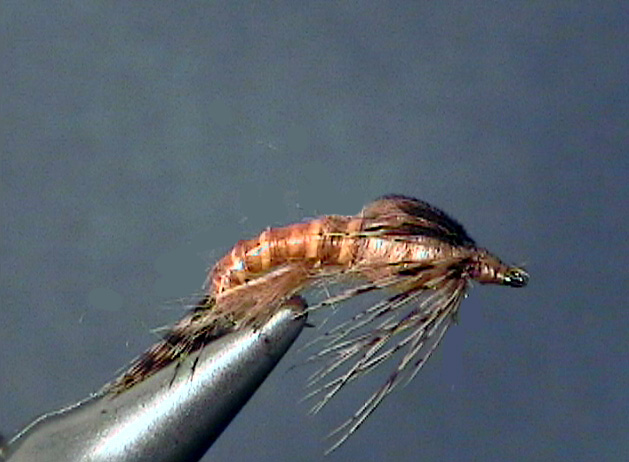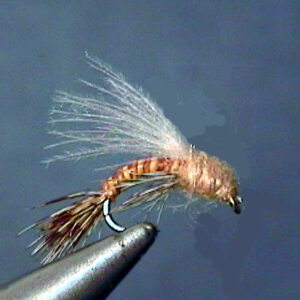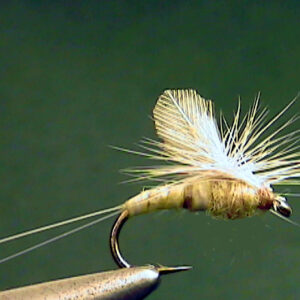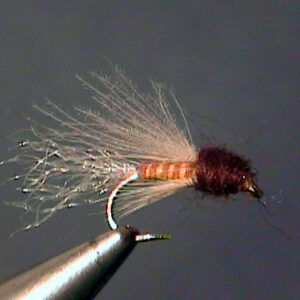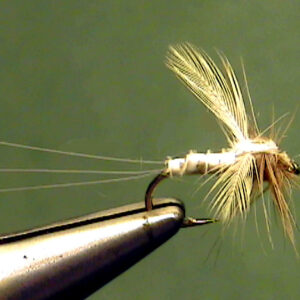Hook Size: 14
The Perfect Fly Eastern Pale Evening Dun nymph is a trout fly that imitates the mayfly in the nymphal stage of life. Eastern Pale Evening Dun nymphs are crawler nymphs. They crawl about on the bottom and should be fished on or near the bottom.
The nymphs of the invaria species of the Ephemerella genus or Eastern Pale
Evening Duns are crawler nymphs. These nymphs prefer riffles and runs with
moderate currents, not fast currents. You may also find them in pockets or the
heads, tailends and edges of some pools.
You can catch trout on imitations of the nymph, anytime or the year. Crawler
nymphs cannot hide underneath rocks and in tight places such as the clingers
can and consequently, they are eaten more frequently than most other types of
nymphs.
These nymphs will move to the nearest, calmer, shallower water a few days prior
to emerging. This is usually just a few feet or less. When they begin to emerge to
hatch, they are very subject to being the meal of a hungry trout.
As mentioned in the introduction segment, in tailwaters where the discharges
from dams affect the stream flows, they will vary in particular location of the
stream depending on the circumstances.
You will not find these mayflies just about everywhere you fish in the Eastern and
Mid-western trout streams. The fast water runs and riffles typical of many trout
streams are just to swift for the crawler nymphs. Areas of streams with moderate
declines rather than steep declines will have far more Eastern Pale Evening Dun
nymphs. Moderately flowing water provides a better habitat for the crawlers.
Nymph Presentation:
Weighted imitations of the nymph should be presented in a dead drift manner in
the riffles, runs and pockets that are flowing moderately, not fast. An upstream
or up and across cast usually works best. You can also use the “high stickin”
method of nymphing. In flat bottom streams with a fairly constant water depth
such as you will find in some tailwaters, the nymphs can be fished from a strike
indicator.
As mentioned above, the best time to fish the nymph is just prior to a hatch. The
nymphs become careless and are only concerned with emerging into a dun.
They are in slower moving water and have little means to hide or escape the
trout prior to emerging.
Copyright 2003 James Marsh
